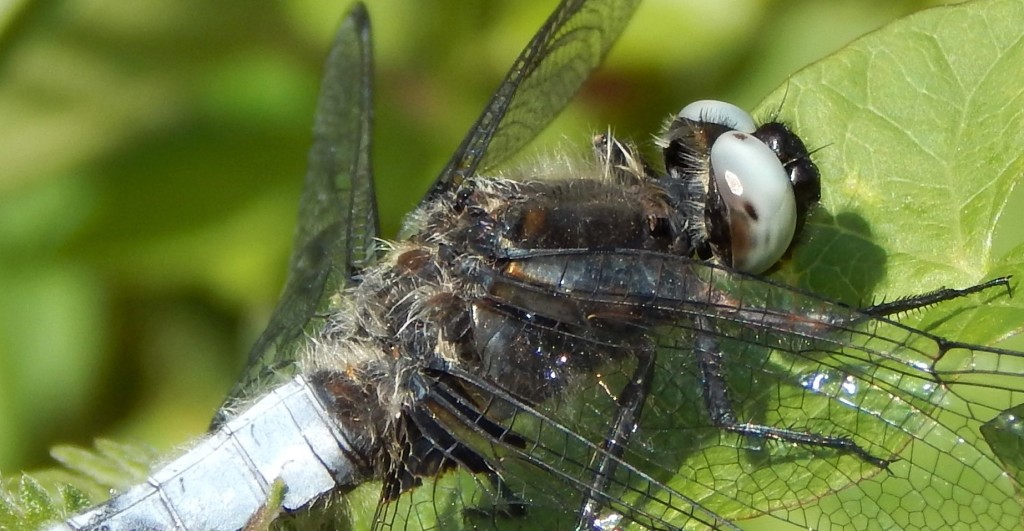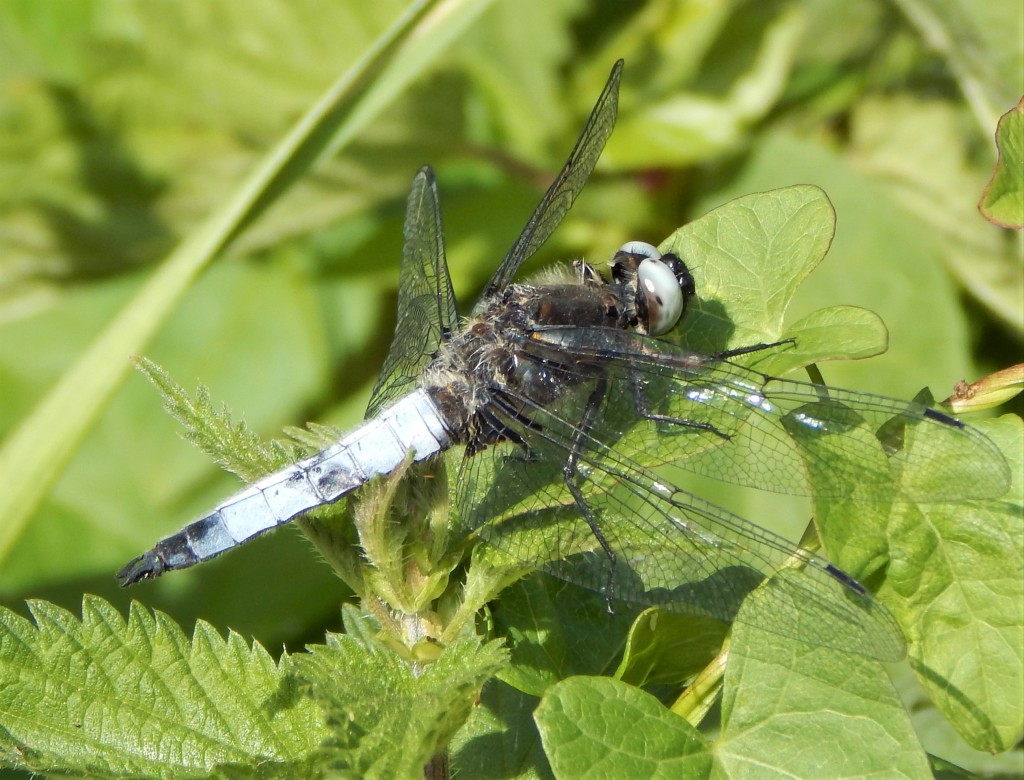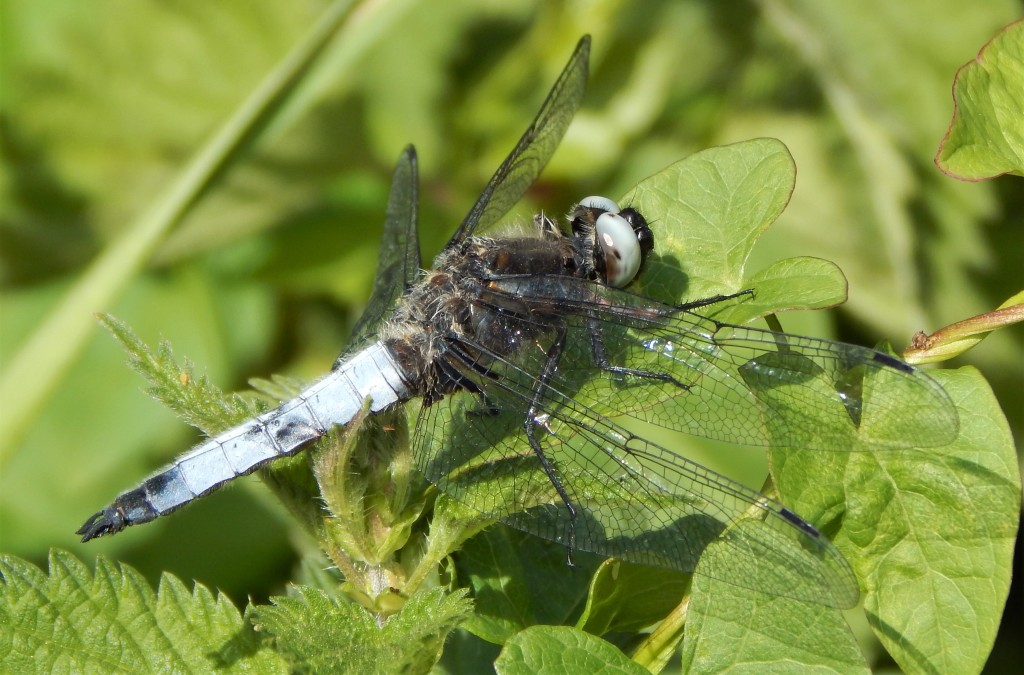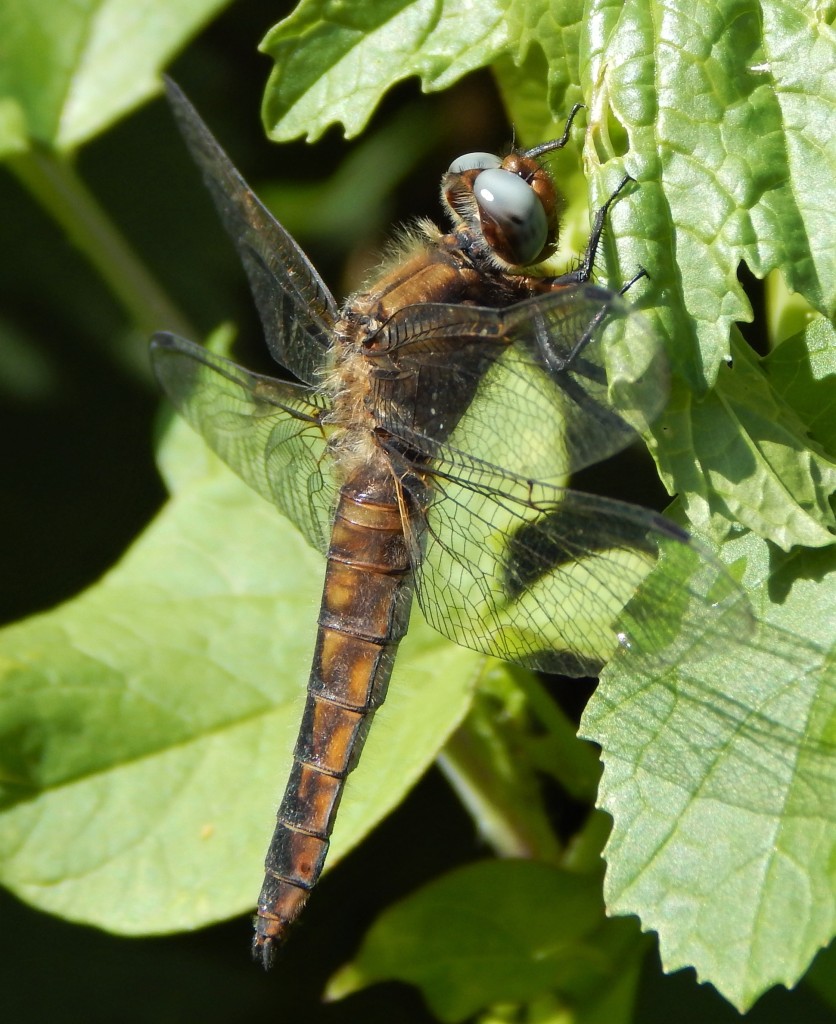
[206] Libellula fulva, Scarce Chaser
Introduction
Libellula fulva, the Scarce Chaser, is a sexually dimorphic dragonfly. It’s either black and blue or brown.
Taxonomy
Kingdom – Animals
Phylum – Arthropods
Class – Insects
Order – Odonata (Dragonflies and damselflies)
Infraorder – Anisoptera (Dragonflies)
Superfamily – Libelluloidea
Family – Libellulidae (Skimmers)
Genus – Libellula
Scientific Name – Libellula fulva
Dragonflies and Damselflies
One of the differences between dragonflies and damselflies is that at rest dragonflies normally hold their wings out to the side whereas damselflies hold them over their backs. In practice the obvious difference is that dragonflies are larger. They spend most of their time hunting over water and are not often seen at rest.
Name
Lillebula is the Latin for dragonfly. Fulvus, also Latin, is a tawny orange colour – presumably from the female form.
Description
The head and thorax of the male Scarce Chaser are very dark blue and its abdomen is very light blue with dark markings.


The female is a tawny dark orange colour with a dark line down the back of the abdomen.



Habitat
The Scarce Chaser is common over continental Europe but relatively scarce in the UK, being found generally in a few location in the South of England.
Other Notes
I can’t say much about dragonflies. Your best chance of finding one is where the adults emerge and rest before flying, which may be on a stalk of grass emerging from water. So, a good camera with zoom facility is useful.
Even if you pick the right day in summer with the right weather. you need to pick the right time of day.
See Also
We will cover four species of dragonfly. [207] The Four-spot Chaser, coming tomorrow; [242] the Black-tailed Skimmer, which looks very similar to the Scarce Chaser; and [329] the Common Darter are all in the family Libellulidae.
